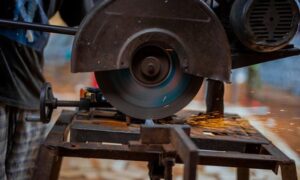
While there are some crossovers in the tasks that beakers and flasks can perform, there are some areas that each specializes in too. It depends on the job you need to perform as to which one you would pick. The problem is, seeing as though they have these similarities between them, it’s hard to know which one to choose. So, how do you know whether beakers or flasks work best for your needs? Let’s look at flasks and beakers, then check out a few of the pros and cons of each.
Flasks
The first visual difference between a flask and a beaker is the shape. With a flask, the mouth is smaller than its body. Whether it is a round body with a cylindrical neck or the flask has sloping sides, the mouth is always smaller than the flask’s body. The smaller mouth helps to prevent overflows and spillages. It can be capped or corked and has measurements on the side.
Beakers
In contrast to the flask, the beaker has a mouth as wide as its base, straight sides, and a flat bottom. It has a lip for pouring liquids and does not have a lid. However, lid alternatives are easy to come by, such as an upended, larger beaker. Measurements are also featured on the side of the beaker.
Pros and cons
The flask and beaker can be used to stir, mix, measure, and heat liquids, but the flask is more specialized in heating liquids and chemical reactions. The smaller mouth helps to contain the contents but makes pouring liquids into them harder, especially if you are pouring from a large container and your measurements have to be precise. However, the beaker is perfect for pouring into and accurately pouring from. The wide mouth does make spillages easier, and a chemical reaction is more likely to overflow in a beaker.
Choosing
You can buy beakers made from metal, glass, or plastic, and they have many applications in an industrial setting. When precise measuring, easy filling, and easy pouring are a must, then a beaker is what you need. The team at RS has 60 beaker or jug products in their online store, showing the range of sizes, materials, and manufacturers available. You can contact them via live chat or ask your favorite supplier about their beakers if you need any advice.
When it comes down to it, the main difference between flasks and beakers is their distinctive shapes. Their shape also influences their use. For measuring, carrying, pouring, and heating liquids, beakers have your needs covered. Available in a range of sizes and materials, it has a flat bottom and straight sides, in contrast to the flask with its round body or conical shape of a small mouth and larger base. For accurate measurements and beakers that do what they’re meant to, ensure you buy quality products from a reputable dealer like RS.






